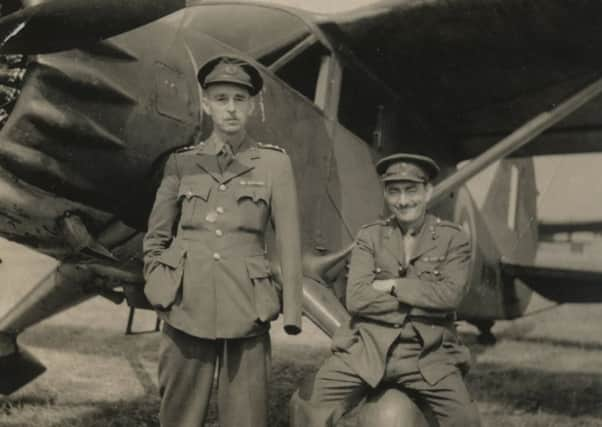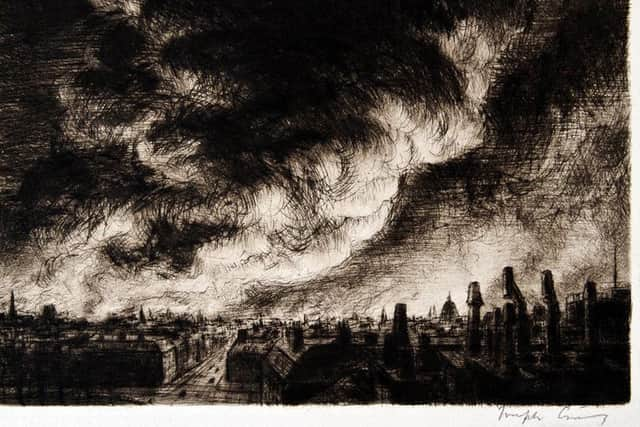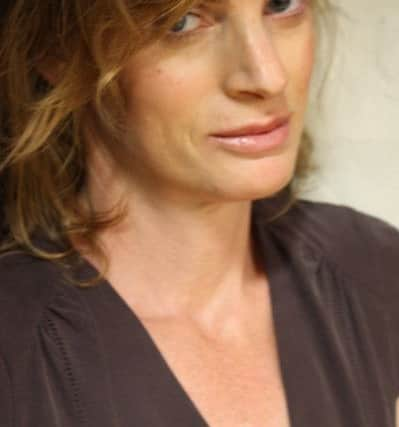The story of the Black Watch recruit who helped invent camouflage


My great-grandfather was Joseph Gray, an artist most people won’t have heard of, but for a long time he was the only artist I’d ever heard of. There were no empty walls in the house where I grew up – Joe’s prints and paintings took up all the space.
While all my friends had tasteful prints or decorative mirrors at home, we had this baffling mixture of styles and subjects, all courtesy of an artist I’d never met. But at least I knew what he looked like – in my grandparents’ flat there was a pencil self-portrait: dark, piercing eyes under hooded eyelids, a wide curving nose. Joe Gray stared intently into the distance, his face turned almost to profile.
Advertisement
Hide AdThe first time I met Joe was through this drawing, and the first time I saw Scotland was through the landscape etchings that hung in my grandparents’ flat. My grandmother, Maureen, Joe’s only child, was born in Dundee. She told me Joe had been a war artist, and because of the etchings on our staircase – images of St Paul’s Cathedral ablaze, the city of London in ruins – I assumed this meant the Second World War. It was many years before I realised how appearances are not all they seem.


Joseph Gray was born in South Shields but moved to Dundee in 1913, to work as an illustrator for the Courier. When war broke out he joined the Fourth Black Watch with a group of journalist friends, calling themselves the “fighter-writers” – the idea being they would report on the war as they fought it. But Joe’s skill at drawing meant he was soon put to work in other ways: he became an observer, sent out to make sketches of enemy positions and draw trench maps. He survived the battles of Neuve Chapelle, Festubert and Loos and when he was invalided home he wrote for the Dundee Advertiser and supplied war pictures for the Graphic.
Joe prided himself on accuracy and when he painted vast canvases of the battles he had fought in, he always depicted the soldiers who had served in the action, even naming them. His painting of Neuve Chapelle hangs in the McManus Galleries in Dundee and another depicting the Cameron Highlanders at Loos is in the Highlanders Museum at Fort George. These works are uncanny in their detail, but Joe’s was a traditional style of painting that was already out of fashion in the Modernist Twenties.
That could so easily have been where the story ended for him – but it didn’t explain the etchings of the London Blitz that were hanging on my family’s staircase. There was, of course, another war, and that’s where everything in my great-grandfather’s life was turned upside down.
Joe had spent one war meticulously representing what he saw, but he spent the next one hiding and disguising it. Art and camouflage – they might be opposites but they are closely interlinked. Joe had only survived the trenches because he’d learned how to blend in with the landscape. Now there would be another war far worse than the one before. It wouldn’t happen overseas, in the desolate open country. It would come from the skies and straight for the cities of Britain. Throughout the Thirties Joe began to re-think what camouflage should be, faced with this new challenge. He even wrote a book about it.


As Joe studied image after image, and material after material, he came up with an answer. He invented a new kind of steel wool which could simulate landscape. An ammunitions dump could become a haystack, a bomb store, a rolling hillside. This false picture could hide railway stations, factories, docks and power stations. Joe was back in uniform before war broke out, working as a camouflage officer and flying all over the country working out how to conceal vital sites.
Advertisement
Hide AdThis complete turnaround, this artistic reinvention, dazzled and baffled me when I first discovered it. My grandmother was more sanguine, however. She admitted she had known very little about her father’s work in camouflage, since by then he had grown adept at hiding – and not just hiding his work. Joe had begun a love affair that would eventually lead to him divorcing my great-grandmother and so cause a rift within the family that all his later paintings and etchings could never fill.
Nobody knows exactly how Joe met his new love, but it was in those tense last years of the Thirties. He was penniless, pushing 50, and carrying around wild ideas about how to hide things. She was Mary Meade, some 15 years younger than him and working as an editor at The Needlewoman magazine. My grandmother remembers her as elegant and clever, and my grandmother should know: She worked for her. For years afterwards, she believed she had unwittingly introduced her father to Mary, “the other woman”, and so acted as the catalyst in the breakdown of her parents’ marriage. But Joe knew Mary already – he just never let on.
Advertisement
Hide AdThe 1921 Manual of Field Works defined camouflage as “the art of concealing that something is being concealed”, which makes it sound so simple. It is not. Camouflage is about blending into your environment, remaining inconspicuous, and even though it might initially mean concealment, it is fundamentally about deception. You fool someone with a surface resemblance, make them think they understand what they see, but what they see is a lie.
Joe’s book Camouflage and Air Defence is at least 100 pages long. There are two heavily annotated copies in the archives of the Imperial War Museum, marked “SECRET” and “Not to be published by order of the War Office”. I searched through these folders and found photographs, drawings, notes on research, samples of material, reports and memorandums. It told me nothing of Joe’s private life but I was grateful to Mary Meade, since she had presented this archive to the museum after his death.
Then all my searches yielded something else: a suitcase of letters that Joe had written to Mary as he travelled around the country in blacked-out trains in the Forties. He described what he saw and how he felt, spilling out the secrets he’d kept hidden from everyone else. They are an extraordinary record – and proof that although he was good at deception, it didn’t come easily. “I can’t camouflage what I feel and I won’t try to,” he wrote.
Joe and Mary would eventually marry, and in the photos of their wedding day they look genuinely happy. My grandmother wasn’t there to see it, however, and when she heard the news she was almost too afraid to ask anything about it.
I hadn’t realised then how all Joe’s paintings and etchings had come to us later, after he had died. They were there to fill in the space that he had left in our family.
I wanted to write my great-grandfather’s story not to fill the gaps, but rather to see the spaces for what they are. Joe’s art was, of course, the opposite. By disguising and dissimulating, the reality was always hidden. As I learned more about this strange and complex man, I realised that it was this ability to camouflage that made uncovering his life story so difficult, but at the same time, his ability was one of the things that helped us win the war.